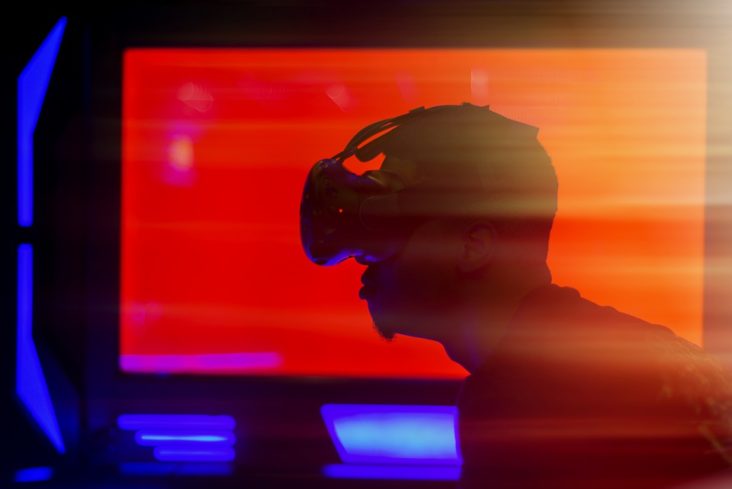Emirates Airline Offer VR to Help Customers Explore Their Options

VR is integrating its way into society, maybe in more ways than we all realise. The world’s tech giants sure seem to think it’s the way forward, with VR getting incorporated into travel, office life, and retail. But Emirates is trying something new. Will we see more brands follow suit? Find out more here.
What is VR?
VR stands for Virtual Reality, with the concept being that you can put on a headset and “enter” the internet. The world you’re entering is all around you, free for you to roam. Think of Ready Player One. Despite being set hundreds of years into an economic-caused apocalypse, they got the tech right. TODAY, the VR headset, gloves, and 360-degree treadmill are all available and seen in experience rooms called “VR rooms” today. They’re considered a fun day out along the same lines as laser tag or escape rooms.
Gaming is in a position to accept VR with open arms, beyond the fact that VR always seemed built for gaming. Titles and products are already designed to be totally immersive. World-building techniques and game design attempt to totally submerge gamers in new environments, suspending disbelief.
Additionally, online casino providers have developed and nurtured a new style of game that taps into a ‘more traditional’ casino experience: the popular live casino. This allows gamers to sit on their sofa at home and interact with a real-life, human table dealer, live-streamed from a set, able to talk to and be entertained by the dealer as if they were sat at the physical table. It’s a new effort to immerse digital users in the ‘physical’ world which casino is ‘traditionally’ associated with. VR, then, is a natural extension of this.
Travel fans are enjoying VR as a means to explore distant worlds. Where a flight would be too costly, or an area isn’t easy to reach, VR is there to guide you. If you were feeling wistful, you could put on your VR headset and see the most remarkable sights our planet has to offer while sitting in your jammies.
Only VR is expanding. Whispers, coming mainly from Facebook CEO Mark Zuckerberg, are talking of the “metaverse.” Initially, VR was hosted as the next step in gaming, allowing for an immersive experience into which the player could land. Facebook and other online giants are looking at VR to make remote working more readily available as the next step after Zoom calls and online chat rooms.
What are Emirates doing?
However, Emirates airlines have cleverly incorporated VR into their marketing campaign. Users will now get to “try out” their flights before they book or board.
With the Oculus headset and the quick installation of an app, users can wander around their potential vehicle, exploring all the features available.
They can take a seat anywhere on the plane, including the cockpit, and try out every cabin class, sample first-class and the squishy reclining chairs with temperature control and mood lighting. Try out the premium economy seating with their superior legroom and choose which of the four class options you want to partake.
You can also try the VIP experiences, such as the bar of the Onboard Lounge, which offers treats that will make you feel like a Kardashian on a trip to Walmart – or even get the spa experience in the A380 Shower Spa.
Take a look at the inflight entertainment options, which offer all the latest and biggest blockbusters and an impressive collection of international movies so that all tastes are satisfied. You can also watch live sports and get news from BBC and CNN.
If you’re feeling nervous about the flight or just curious, you can always step into the cockpit and sit in the pilot’s seat. Try out all the controls and tell Chewie to punch it.
Is it just Emirates?
It seems not. Emirates is definitely amongst the first to offer such services, but there are so many eyes on Virtual Reality that it would be naïve to assume they would be the last.
There are smaller examples of using virtual reality amongst brands. They tend to stick to an AR or “augmented reality” experience that doesn’t require the headset but also doesn’t entirely immerse you in another world the way VR does.
For example, IKEA offers augmented reality on their website so that a user can point their device at an empty corner in their home, and their furniture piece of choice will appear, allowing them to see if it would suit the rest of the room.
L’Oreal also offers augmented reality to give their customer’s a “virtual makeover,” allowing them to test out various makeup items with the camera on their device.
And famously, Amazon has launched their idea of entirely Virtual Reality kiosks. Initially marketed for their Prime Day sales, customers could walk down virtual aisles, browse virtual items, and pay the same way they did with any other online transaction.
The kiosks also offered extra features like being able to try on clothing provided in the store and extra touches like opening fridges and storage to find the item for which you’re searching.
With demonstrations being a big part of marketing and brands looking for any new and innovative way to grab customers’ attention, it’s likely we’ll see more VR experiences incorporated into everyday life.


